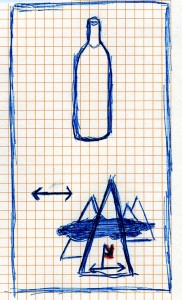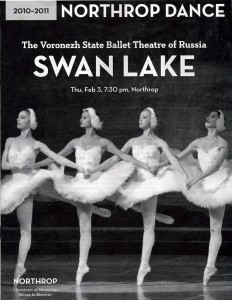#327 – Dick Bernard: Part 3. The Canyon of 60 Abandon, and More Ways to Communicate Less
In November, 1998, I was very actively contemplating retirement, and I attended a conference of the National Education Association (NEA) in the Houston area.
We were at a nice resort hotel, but the weather was – to put it mildly – awful. By the time we left we were shuttled around in large trucks due to flooding on the resort grounds.
Despite the memorable weather, what was truly memorable for me happened at the conference, where a presenter I’d never heard of, Michael Meade, gave a workshop entitled “The Canyon of 60 Abandon”. To the accompaniment of his own powerful drumming, he told the story of a society where the old were retired at age 60, then banished to a far distant Canyon, no more to be part of the society.
One family violated the rules, and hid their elder under the porch. In his myth, Meade said the King called for a competition, with a large prize going to the winner. The family with the hidden elder utilized the elders accumulated wisdom, solved the puzzle and won the prize.
In 1998 I was, truly, wondering what if anything lay beyond the long career I was finishing. Fourteen months later I did retire, and found out. And today, eleven years later, I am still finding out.
There is, indeed, a “Canyon of 60 Abandon”, but out in that Canyon, I have learned, there are huge numbers of incredibly talented people whose wisdom seems largely to go unused because…. Well, I don’t know the specifics of why. This deserves conversation.
Then there is the very matter of conversation.
Conversation between elder and younger (which seems to be defined as who is “working” or of employable age, versus who is not) is more complicated now than it has ever been. For a long time, I’ve been observing that there are “more ways to communicate less“. First evidence of that comes in a September, 2002, item I wrote for public school administrators and school public relations people.
In February, 2004, for the same audience, I enumerated some communications methods I’d seen discussed in 1991; along with an updated personal list of newer communications mediums as I knew media in 2004.
Unknown to me in 2004, because they were either just beginning or unknown to anyone, were communication methods very much in vogue today: Facebook (beginning Feb. 2004, regular messages restricted to about 420 characters); YouTube (2005, 10 minutes maximum. I use YouTube earlier in this column); and Twitter (2006, messages restricted to 144 characters). For someone from my generation, accustomed to letters to the editor (perhaps 200 word maximum) or newspaper columns (probably 600 words – this entry is almost exactly 600 words), to even communicate with someone from my children and grandchildrens generation can be dicey even if you live close by and can visit in person, which is seldom the case these days.
We have to figure out how to not only talk to each other, but how to listen, and to truly value each other.
In Michael Meade’s mythical society, the throwaway elders represented a big cost to that society; in today’s remaining society, the very real “Canyon” between youngers and the others has to be reduced.
We also need to sort out how we make societal decisions these days which seem premised solely on the Power Bargaining model: he or she who has the strongest ‘whatever’ wins, and the rest lose.
It is not much of a recipe for the long term success of our society and, indeed, world. In a world of winners over losers, everybody loses.
I close with a recent and current Facebook entry of an upcoming event. I plan to attend, and to buy the book as well.
Related posts Feb. 6, Feb. 7, and Feb. 10.


